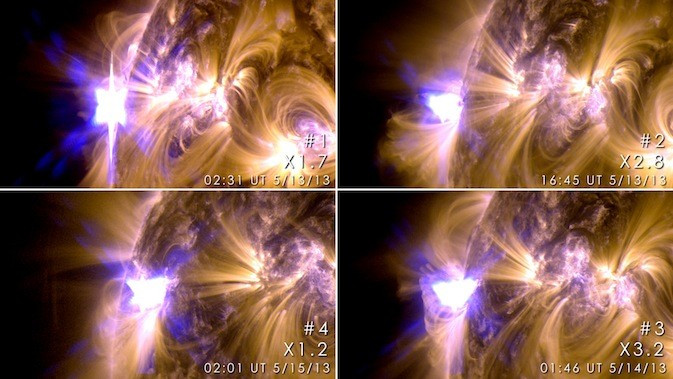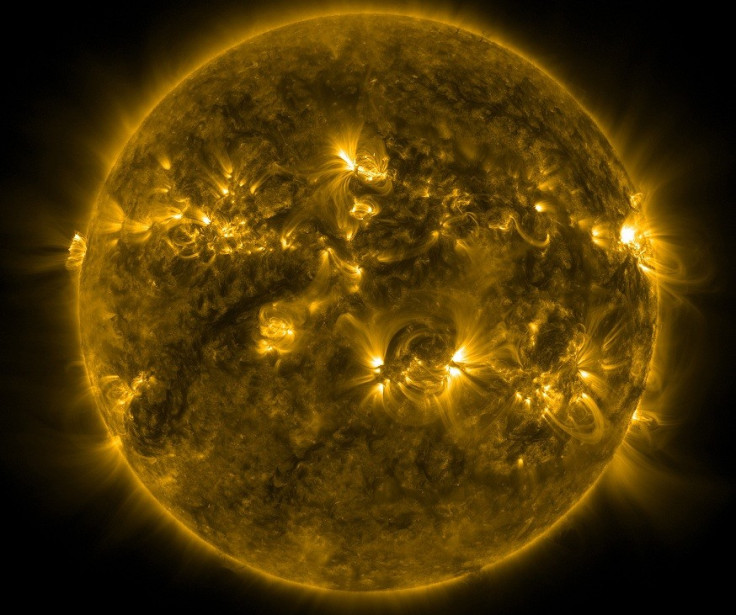Nasa Images Show Sun Creating Four Billion H-Bombs of Energy

The sun exploded in a series of spectacular flares which blasted into space at 745 miles per second, in stunning scenes captured by Nasa.
There were also coronal mass ejections yesterday - super massive explosions on the sun, in what has been a very active period for Helios.
Four huge flares took place in a single 24-hour period and spewed out in to space colossal amounts of radiation.
Each one had the power of around a billion hydrogen bombs, experts said. They were classed as the very strongest type of flare - so called 'x class.'
The third solar emission blasted into space at around 1,400 miles per second.
But scientists say there is no threat posed to earth by the dramatic solar activity. That is because our planet does not sit in the path of the energy particles.
At present, the Sun is nearing the peak of an 11-year cycle called the 'solar maximum.'

Dr Robert Massey, from the UK's Royal Astronomical Society, told BBC: "What's interesting about these events is that you have them in quick succession.
"It really does say that we're approaching this 11-year peak. We can't say exactly when it's going to happen, you can only work it out retrospectively.
"These are spectacular events, an X-class flare is equivalent to a billion hydrogen bombs. We're talking about a colossal amount of energy," said Dr Massey.
"The good news is that although these can cause problems - at worst - with power supplies and so on, there's really no threat to us living on the ground."
Activity on Tuesday on the sun was among the highlights of what has been a relatively quiet 2013 for the firery ball of gas.
© Copyright IBTimes 2025. All rights reserved.




















